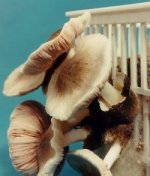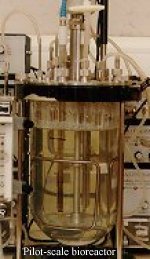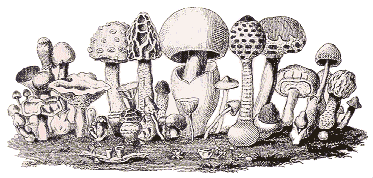Biotechnology which can simply be defined as the application of living organisms and their components to industrial products and processes is not an industry in itself, but an important technology that will have a large impact on many different industrial sectors in the future. Of course, biotechnology is not new; traditional products include bread, beer, cheese, and wine. In textile processing the enzymatic removal of starch sizes from woven fabrics has been in use for most of this century and the fermentation vat is probably the oldest known dyeing process. What has given biotechnology a new impetus in the last few years has been the very rapid developments in genetic manipulation techniques (genetic engineering) which introduces the possibility of 'tailoring' organisms in order to optimise the production of established or novel metabolites of commercial importance and of transferring genetic material (genes) from one organism to another. Biotechnology also offers the potential for new industrial processes that require less energy and are based on renewable raw materials. It is important to note that biotechnology is not just concerned with biology, but it is a truly interdisciplinary subject involving the integration of natural and engineering sciences.
Some of the most important organisms used in biotechnology are fungi. Only a few examples of the products and processes involving fungi (Table 1) can be described here, however a list of recent review papers is included at the end of this article.
Food Applications
Brewing and baking have been carried out for thousands of years and both are dependant on the conversion of sugar into alcohol and carbon dioxide by yeasts. In bread making carbon dioxide causes the dough to rise giving lightness to the bread whilst the alcohol is driven off during baking. Early processes were dependent on contamination by 'wild' yeasts. Today pure strains are normally employed and some 1.5 million tons of baker's yeast (Saccharomyces cerevisiae) are produced world wide every year. Cheese production also has ancient origins. The growth of the mould Penicillium roqueforti in the body of blue-veined cheeses and the surface growth of the moulds Penicillium candidum, Penicillium caseicolum, or Penicillium camemberti on Camembert, Brie and related types of cheeses play an important role in the development of the characteristic flavours of these cheeses. Oriental food fermentations such as the one used to produce soy sauce were originally carried out as home or cottage industries. Traditional fermentations could take several months but this has been reduced to 2-3 days in a modern plant. The principal fungus involved, Aspergillus oryzae, is now also used to produce a range of commercially important enzymes.
 Cultivation of edible mushrooms outdoors has been practised for
hundreds if not thousands of years. More consistent crops and
much higher yields were obtained following the development of
pure spawns, sterilisation/pasteurisation technology, a better
understanding of substrate requirements and the use of environmentally
controlled mushroom houses. However, even today only a handful
of species are grown commercially on a large scale although these
represent a multi-billion dollar industry. Many of the most sought
after species (e.g. Boletus edulis, Cantharellus cibarius,
Hydnum repandum, Tricholoma matsutake, Tuber
melanosporum) are believed to be dependant on mycorrhizal
associations with trees and have not been fruited in the absence
of the host tree. The decline of these species in some countries
has promoted debate on the effects of commercial picking. Concern
has also been expressed regarding the accumulation of toxic and
radioactive metals by wild mushrooms. Further research into the
life cycle of these species may lead to their eventual cultivation.
Earlier this year the first successful formation of fruit-bodies
of the golden chanterelle (Cantharellus cibarius) in a
greenhouse was achieved, hosted by pine seedlings only 16 months
old (Danell & Camacho, 1997).
Cultivation of edible mushrooms outdoors has been practised for
hundreds if not thousands of years. More consistent crops and
much higher yields were obtained following the development of
pure spawns, sterilisation/pasteurisation technology, a better
understanding of substrate requirements and the use of environmentally
controlled mushroom houses. However, even today only a handful
of species are grown commercially on a large scale although these
represent a multi-billion dollar industry. Many of the most sought
after species (e.g. Boletus edulis, Cantharellus cibarius,
Hydnum repandum, Tricholoma matsutake, Tuber
melanosporum) are believed to be dependant on mycorrhizal
associations with trees and have not been fruited in the absence
of the host tree. The decline of these species in some countries
has promoted debate on the effects of commercial picking. Concern
has also been expressed regarding the accumulation of toxic and
radioactive metals by wild mushrooms. Further research into the
life cycle of these species may lead to their eventual cultivation.
Earlier this year the first successful formation of fruit-bodies
of the golden chanterelle (Cantharellus cibarius) in a
greenhouse was achieved, hosted by pine seedlings only 16 months
old (Danell & Camacho, 1997).
A recent innovation in food technology has been the development of Quorn myco-protein from a filamentous fungus by Rank Hovis McDougall PLC and ICI (now Zeneca). The culture employed, a strain of Fusarium graminearum, was isolated from a field in Marlow, Buckinghamshire. Quorn is produced from mycelia grown in 155,000 litre airlift fermenters. The filamentous nature of the biomass is responsible for the meat-like texture and appearance of the final product. Probably the most thoroughly tested food ever to appear on supermarket shelves, annual sales of Quorn are now in excess of £15 million in the UK.



Useful Products
Many important industrial products (chemicals, pharmaceuticals etc.) are now produced from fungi using fermentation technology as indicated in Table 1. Early fermentations used open processes under nonsterile conditions but this changed in the 1940s with the introduction of the stirred-tank bioreactor for penicillin manufacture which required the development of novel engineering techniques to exclude contaminating microorganisms. An example of a major commodity chemical manufactured by fungal fermentation is citric acid which is widely used in the food and pharmaceutical industries. Prior to 1923 citric acid was produced from lemons mainly in Italy. In 1923 commercial production using Aspergillus niger was initiated in the US and soon totally replaced that from lemons decimating the Italian citric acid industry. The original citric acid fermentation was based on surface culture in shallow pans or trays. Production is now normally carried out by submerged culture in stirred tank reactors.
The mediation of chemical reactions by catalytic proteins (enzymes) is a central feature of living systems. Living cells make enzymes although the enzymes themselves are not alive and we can encourage living cells to make more enzymes than they would normally make or to make a slightly different type of enzyme (protein engineering) with improved characteristics of specificity, stability and performance in industrial processes. These enzymes usually operate under mild conditions of pH and temperature. A wide range of enzymes are excreted by fungi and play an important role in the breakdown of organic materials; many of these enzymes are now produced commercially (Table 2). Most are used in food processing, however, new applications are being found all the time. For example, it was recently discovered that cellulase enzymes could replace the pumice stones used by industry to produce 'stone-washed' denim garments. The stones can damage the clothes, particularly the hems and waistbands, and most manufacturers are now using the enzyme treatment. Another novel textile application for cellulase enzymes is in biopolishing, the removal of fuzz from the surface of cellulosic fibres which eliminates pilling making the fabrics smoother and cleaner-looking.
 Fungi are well known as a source of antibiotics but new therapeutic
compounds with novel pharmacological activities have also been
developed in recent years. One such example are the cyclosporins
first isolated from Tolypocladium inflatum in 1976 as antifungal
compounds and later shown to possess immunosuppressive activity.
Cyclosporin A is currently the most widely used drug for preventing
rejection of human organ transplants (note: 20 years later the
sexual stage of T. inflatum was found to be Cordyceps
subsessilis).
Fungi are well known as a source of antibiotics but new therapeutic
compounds with novel pharmacological activities have also been
developed in recent years. One such example are the cyclosporins
first isolated from Tolypocladium inflatum in 1976 as antifungal
compounds and later shown to possess immunosuppressive activity.
Cyclosporin A is currently the most widely used drug for preventing
rejection of human organ transplants (note: 20 years later the
sexual stage of T. inflatum was found to be Cordyceps
subsessilis).
The polysaccharides chitin and its derivative chitosan have a wide range of industrial applications. These biopolymers are currently obtained commercially by treatment of prawn- and crab-shell wastes. However, problems with product variability, processing difficulties and the seasonal nature of the raw material have prompted research into alternative supplies. Filamentous fungi grown under controlled conditions are an attractive source of chitin and chitosan where a high-quality product is required (e.g. for cosmetic, medical and pharmaceutical applications). Work carried out at BTTG (Manchester, UK) and the Welsh School of Pharmacy have demonstrated that fungal filaments from species having a high content of these polysaccharides in their cell-walls exhibit biological activities (cell attractant, cell-binding and pro-proliferant) of relevance to wound healing (Hamlyn & Schmidt, 1994).
Other Processes
Fungi can be used in new production processes that are themselves less polluting than traditional chemical processes and some species of white rot fungi are already being employed to degrade toxic wastes. Many of these applications are still under development. For example, textile dyes could be produced by fermentation in the future (note: before the invention of synthetic dyes in the nineteenth century the colours used to dye textiles came from natural sources such as plants and lichens). Many fungi produce pigments during their growth which are substantive as indicated by the permanent staining that is often associated with mildew growth on textiles and plastics. Some fungal pigments have been shown to be anthraquinone derivatives, resembling the important group of vat dyes. Fungi therefore have potential as agents for the direct production of textile dyes or dye intermediates replacing chemical synthesis which has inherent waste disposal problems. The production and evaluation of microbial pigments as textile colorants is currently being investigated at BTTG (Manchester, UK) and preliminary results have been published (Hobson & Wales, 1998).
Recent studies have suggested that lignin-degrading or white-rot fungi (note: decay caused by these species gives wood a bleached appearance) such as Phanerochaete chrysosporium and Trametes versicolor could replace some of the chemical steps used in paper making. An industrial biopulping/biobleaching process would eliminate the pollution problems associated with the use of chemicals. Lignin-degrading fungi or their enzymes also have the ability to degrade highly toxic organic compounds such as dioxins and PCB's (polychlorinated biphenyls), and could have an important role to play in the remediation of contaminated soils and the disposal of chemical wastes. A recent report also indicates that lignin-degrading fungi can even degrade synthetic textile polymers such as nylon previously thought to be non-biodegradable (Deguchi etal., 1997).
The use of fungi as biocontrol agents to kill insects (mycoinsecticides) and weeds (mycoherbicides) has the potential to replace many of the toxic chemicals currently in use. Several species of fungi have now been commercially formulated as mycoinsecticides (note: spores of Metarhizium anisopliae were first used in Russia in the late 1800s as a mycoinsecticide).
Further Reading
Arora, D.K., Elander, R.P. & Mukerji, K.G., eds. (1992). Handbook of Applied Mycology, vol. 4., Fungal Biotechnology. Marcel Dekker, New York.
Carlile, M.J. & Watkinson, S.C. (1994). The Fungi. Academic Press, London.
Danell, E. & Camacho, F.J. (1997). Successful cultivation of the golden chanterelle. Nature, 385, 303.
Deguchi, T. etal. (1997). Nylon biodegradation by lignin-degrading fungi. Applied and Environmental Microbiology, 63, 329 - 331.
Finkelstein, D.B. & Ball, C., eds. (1992). Biotechnology of Filamentous Fungi: Technology and Products. Butterworth-Heinemann, Boston.
Hamlyn, P.F. & Schmidt, R.J. (1994). Potential therapeutic application of fungal filaments in wound management. Mycologist, 8, 147 - 152.
Hamlyn, P.F., Wales, D.S. and Sagar, B.F. (1987). 'Extracellular enzymes of Penicillium', in Biotechnology Handbooks, Volume I: Penicillium and Acremonium (Peberdy, J.F., ed.) Plenum Publishing Corporation, New York, pp 245 - 286.
Hobson, D.K. & Wales, D.S. (1998). 'Green' dyes. JSDC, 114, 42-44.
Leatham, G., ed. (1993). Frontiers in Industrial Mycology. Chapman & Hall, London.
Trinci, A.P.J. (1992). Myco-protein: A twenty-year overnight success story. Mycological Research, 96, 1 - 13.
Wainwright, M. (1992). An Introduction to Fungal Biotechnology. Wiley, Chichester.
| Food Applications | Useful Products | Other Processes |
|---|---|---|
| Baking | Alkaloids | Biobleaching/biopulping |
| Brewing | Antibiotics | Biological control agents |
| Cheese-making | Ethanol | Bioremediation of soils |
| Mushroom cultivation | Enzymes | Coal solubilisation |
| Oriental food fermentations | Gibberellins | Dyes/dye intermediates |
| Quorn myco-protein | Immunomodulators | Microencapsulation |
| Organic acids | Mycorrhizal inoculants | |
| Polysaccharides | Steroid bioconversions | |
| Vitamins | Waste treatment |
| Enzyme |
Main Source |
|---|---|
| Asparaginase | Aspergillus spp. and Penicillium spp. |
| Amylase | Aspergillus niger, Aspergillus. oryzae |
| Catalase | A. niger, Penicillium spp. |
| Cellulase | A. niger, Trichoderma reesei, T. viride, Penicillium finiculosum |
| Dextranase | Penicillium spp. |
| ß-Glucanase | A. niger, Penicillium emersonii, T. reesei, T. viride |
| Glucoamylase | A. niger, A. oryzae |
| Glucose oxidase | A. niger, Penicillium spp. |
| Hemicellulase | A. niger, A. oryzae, T. reesei, T. viride, P. emersonii |
| Laccase | Pyricularia oryzae |
| Lipase | Several species including A.niger, A. oryzae |
| Pectinase | Several species including A. niger, Rhizopus oryzae |
| Protease | Several species including A. niger, A. oryzae |
| Rennet | Mucor miehei, Endothia parasitica |
| Tannase | A.niger, A. oryzae |
| Xylanase | A. niger, T. reesei |
